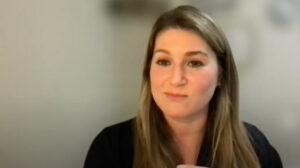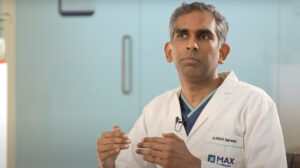NEW YORK (Reuters Health) – In adolescents and adults with active eosinophilic esophagitis (EoE), a 15-day induction course of nebulized budesonide is sufficient to induce histologic remission and improve symptoms, and is well tolerated, results of a randomized controlled trial indicate.
Furthermore, in an e-mail to Reuters Health, Dr. Alex Straumann from University Hospital Basel in Switzerland noted that tissue remodeling is a “serious concern of EoE (and) our study demonstrates that fibrosis can be reversed with topical corticosteroids.”
The prevalence of EoE is increasing; epidemiological data suggest it is now the second leading cause of chronic esophagitis, behind gastroesophageal reflux disease. EoE effects all age groups but most often individuals between 20 and 50 years old.
Standard recommendations for drug therapy for EoE include systemic or topical corticosteroids and leukotriene antagonists but are based on case reports and small case series. “So far no proper randomized controlled trials have been published,” Dr. Straumann said.
The research team, therefore, enrolled 36 patients older than 14 with previously clinically, endoscopically, and histologically confirmed active EoE in a randomized, placebo controlled trial. For 15 days, half were treated via nebulizer with 1 milligram budesonide suspension formulation (Pulmicort Respules; AstraZeneca) twice daily and the other half were treated with nebulized saline placebo.
After 15 days of budesonide treatment, the average number of eosinophils in the esophageal epithelium (the primary endpoint) was significantly reduced by 91.9%, from 68.2 to 5.5 eosinophils per high power field (p < 0.001). In the placebo group, eosinophil load remained almost unchanged (going from 62.3 to 56.5 eosinophils per high power field (p = 0.48). Thirteen of 18 patients (72.2%) in the budesonide group fulfilled criteria for complete histologic remission compared with 2 of 18 (11.1%) in the placebo group. A histologic response was seen in three budesonide-treated patients (16.7%) compared with none in the placebo group. All patients were bothered to a similar degree by dysphagia for solid foods at the outset. Dysphagia symptoms improved rapidly and significantly (p < 0.0001) in 13 of 18 patients in the budesonide group, whereas the swallowing disturbances persisted in 14 of 18 in the placebo group. Endoscopy examination showed a reversal of white exudates and red furrows in the budesonide group. Budesonide, but not placebo, also reduced epithelial cell apoptosis by 75%, as well as molecular remodeling events in the esophagus, the authors report. A significant reduction (but not normalization) of fibrosis and fibrosis-related markers was also evident after 15 days of budesonide, they say. Esophageal application of nebulized budesonide was well tolerated and no serious adverse events were reported. In three patients, mild signs of clinically asymptomatic Candida albicans were seen on follow up endoscopy. In one other patient on budesonide this infection was found only histologically. “The study demonstrates that a short 15-day treatment is sufficient to achieve a resolution of inflammation and symptoms,” Dr. Straumann said. He noted, however, that the question of the long term management of EoE is not answered by this trial, although a soon-to-be published follow up study will yield longer-term data. The study was funded by the Swiss National Science Foundation and AstraZeneca, Switzerland.




